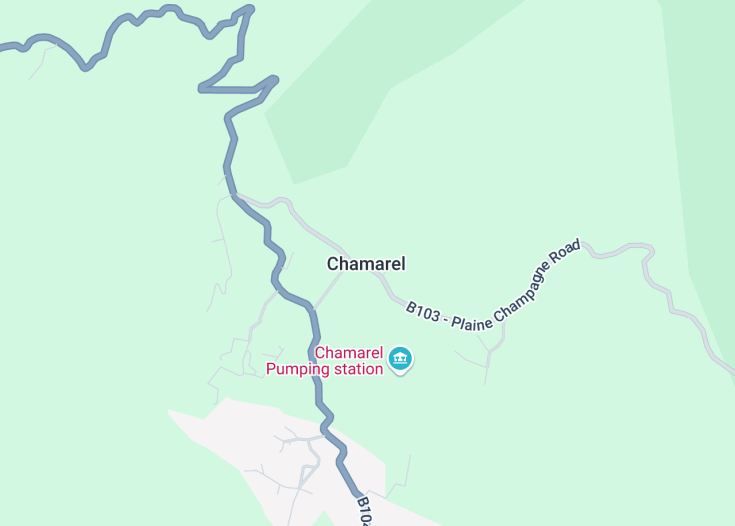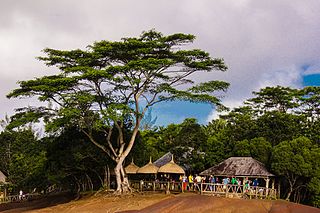Nestled on the southwestern coast of Mauritius, Chamarel is a small village celebrated for its picturesque landscapes and unique geological formations. This enchanting locale is home to the renowned Seven Coloured Earths, where the sands form a mesmerizing palette of seven distinct colors. Visitors can also explore the Chamarel Waterfalls, which offer breathtaking views amid lush greenery. The area is steeped in tranquility, making it a perfect retreat from the bustling tourist spots, and offers a glimpse into the tranquil, natural beauty of Mauritius.
Before visiting Chamarel, ensure to carry a good camera; the unique landscape and vibrant hues of the earth provide exceptional photo opportunities that are not to be missed.
Consider visiting Chamarel early in the morning to enjoy the serene beauty of the landscape in soft morning light and avoid the typical tourist crowds.
How to best experience Chamarel?
Tickets, tours, and activities for Chamarel are available at these providers:
Click on the logos below to easily compare prices.

Feeling lucky? Try the direct search:
GetYourGuide.com Viator.com Trip.com Expedia.com Tiqets.com Ctrip.com (中文)
Chamarel: A Palette of Nature’s Best Colors
| Country | Mauritius |
| Time in Chamarel | GMT+4 |
| Language spoken | Creole, French, English |
| Population | 700 (Derived from the latest census data) |
| Currency | Mauritian Rupee (MUR, ₨) |
| Airports |
|
Chamarel, a small village in Mauritius, is renowned for its natural beauty, rich history, and vibrant culture. Situated in the Rivière Noire District of southwestern Mauritius, this idyllic location is nestled amidst lush forests and hills, offering breathtaking views and a serene atmosphere.
The village of Chamarel is most famous for the ‘Seven Colored Earths,’ a striking natural phenomenon where sand dunes comprise sand in seven distinct colors—red, brown, violet, green, blue, purple, and yellow. This unique geological formation is one of the leading causes behind the village’s international fame and attracts thousands of tourists year-round, eager to see this natural wonder.
Beyond its colorful soils, Chamarel is also home to the highest waterfall in Mauritius, the Chamarel Falls, which is about 83 meters (272 feet) high. The area around the waterfall and the colored earths is surrounded by lush vegetation and offers various trekking and walking paths for nature enthusiasts.
The local culture is predominantly influenced by Creole heritage, visible in the architectural designs, cuisine, and the warm hospitality of the residents. Traditional Creole dishes, which blend African, European, and Asian influences, are a delight for visitors, offering a taste of the complex cultural mosaic in Chamarel.
Culturally significant, Chamarel also hosts various festivals throughout the year, including the celebrated Festival Kreol, epitomizing the vibrant local music, dance, and art. This festival not only celebrates the unique Creole culture but also fosters a sense of community and pride among its dwellers.
The commitment to sustainable tourism is evident across Chamarel, with several eco-friendly initiatives aimed at preserving the natural and cultural heritage of the area. Small, boutique accommodations and local craft markets support the local economy without compromising the environmental or cultural integrity of Chamarel.
In conclusion, Chamarel is not just a destination; it is an experience filled with color, culture, and history. Whether you’re a nature lover, a cultural enthusiast, or simply in need of a peaceful retreat, Chamarel promises an unforgettable journey into the heart of Mauritius.
Where is Chamarel?
Located in the southwestern part of Mauritius, Chamarel sits in the highlands which provide it with a cooler climate compared to the coast.
Distances:
| Route | Distance by car | Time by car |
| Port Louis to Chamarel | 53 km | 1 hr 20 min |
| Grand Baie to Chamarel | 75 km | 1 hr 50 min |
What is Chamarel famous for?
Chamarel is famous for its unique geological formation, the Seven Colored Earths, attracting visitors worldwide with its vibrant and varying hues.
History
Early Settlements and Colonial Times (16th Century – 19th Century)
The region now known as Chamarel was largely uninhabited before the arrival of European settlers. The dense forests and rugged terrain of Mauritius provided a challenging environment for colonization. It was not until the Dutch first claimed Mauritius in the 16th century that the area began to see a slow trickle of settlers. However, significant development came with the French colonization in the 18th century, who began clearing land for agriculture, notably for sugar cane plantations, which would dominate the island’s economy. Chamarel, with its fertile soil and climatic conditions, became one of those areas developed during this time.
Transformation into a Tourist Destination (20th Century – Present)
In the 20th century, as the decline of the sugar industry began affecting Mauritius, Chamarel started to transform from an agricultural zone into a touristic area. Recognized for its natural beauty, including the iconic Chamarel Seven Coloured Earths and the nearby waterfalls, the locality began attracting tourists from around the world. Today, Chamarel is not just known for its picturesque landscapes but also for its cultural richness, hosting numerous quaint restaurants, art galleries, and boutiques that reflect the diverse heritage of Mauritius.
Visit Chamarel
What to see and do in Chamarel, Mauritius
Chamarel, Mauritius offers a blend of natural and cultural attractions that cater to diverse tastes. Adventure seekers can explore hiking trails leading to majestic waterfalls like the Chamarel Waterfalls, while nature lovers might prefer visiting the mesmerizing Chamarel Seven Coloured Earths, a geological formation and significant tourist attraction. For a deeper dive into local culture:
- Visit the Chamarel Rum Distillery to learn about rum production and taste local spirits.
- Explore local art and crafts at the various boutiques and galleries in the village.
Annual Events in Chamarel
Chamarel hosts several cultural and gastronomic events throughout the year, most notable of which include the Chamarel Art Festival in March and the Gastronomy Festival in September. These events offer a vibrant showcase of the local arts and culinary specialties, drawing both locals and tourists to celebrate the rich cultural tapestry of Chamarel.
Best time to visit Chamarel
The best time to visit Chamarel is from May to December when the weather is cooler and drier. This period offers the most pleasant climate for exploring the outdoor attractions and participating in the local events that highlight Chamarel’s cultural vitality.
Is Chamarel worth visiting?
Chamarel is undoubtedly worth visiting for anyone looking to experience a unique blend of natural beauty and cultural richness. The area offers an array of activities and sights, from the stunning natural phenomena of the colored earths and majestic waterfalls to the cultural experiences of local distilleries and art scenes. Chamarel presents a tranquil yet enriching destination that promises to leave lasting impressions on its visitors.

